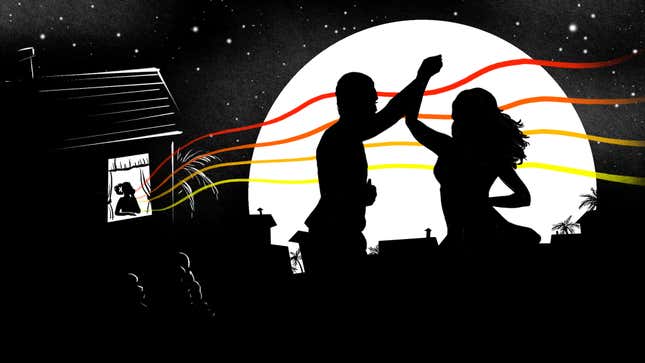For SoCal Girls Like Me, Romeo Santos and Bachata (Almost) Sound Like Home
Entertainment

When Romeo Santos walked offstage toward the pump fake ending of the first of his three Barclays Center performances last month, the crowd of Romeístas was unified in our ravenous desire for more. “PROPUESTA INDECENTE!” we all screamed, playing along despite knowing full well the King of Bachata wouldn’t let the night come to a close without engaging us all in that transgressive lovers’ dance.
The lusty single that propelled Formula Vol. 2 to the top of the charts, “Propuesta Indecente” translates directly to “indecent proposal.” A chronicle of a night spent convincing a woman to go home with him despite her boyfriend casually hanging around, the sensual track is prototypically Romeo: “Dígame usted si ha hecho algo travieso alguna vez / Una aventura es más divertida si huele a peligro (Tell me if you’ve ever done anything forbidden / adventure is more fun if it seems dangerous).”
Of course Romeo’s performance delivered. He is, after all, the undisputed “King of Bachata,” the mega-popular genre of music that finds its roots in the stylings of impoverished rural Afro-Dominican bachateros. After two minutes that each felt like millennia, the lights came back on to reveal a stage on which Romeo stood triumphantly alongside a woman… and a giant bed, from which he belted part of the final song. Romeo’s erotic theatrics—and the sensuality that pervades his music and persona alike—are nothing new. He’s been “so nasty” since his days singing lead for Aventura, the Bronx-based bachata band that rose to mainstream success in the late ‘90s and dominated Latin & pop charts alike until their 2011 split.
I didn’t know Latin@s could also be black when I first fell in love with bachata, but its sonic blackness always spoke to me. Bachata’s strings evoked the same deep expression I’d always associated with black percussion—even before I knew its sounds came from the Dominican Republic’s Afro-descendant bachateros. By the time I formally learned the country was home to a large (and consistently repressed) black population, I’d already heard and felt its visceral blackness.
The first time I heard Aventura, I was an awkward 10-year-old Ethiopian girl living about 45 minutes outside Los Angeles. I spoke only the requisite, remedial Spanish of all SoCal residents, but bachata and reggaeton were the soundtrack of my neighbors’ frequent house parties. The music that floated over the fence separating our backyards kept my parents up at night complaining about the noise of rambunctious young adults and the music whose decibels matched their energy levels. Ever the timid rebel, I spent my adolescence keeping my windows open or sneaking outside to soak up the parties’ vibrant sounds—laughter, stories, and the music of artists I would later recognize as Aventura, Wisin Y Yandel, Xtreme, and countless others.
I knew my neighbors’ parties were lit, and I delighted in the years spent experiencing them vicariously. The music became a bridge to the people around me, the conduit by which we exchanged culture and comedy, learned each other’s names and histories. I didn’t have words to describe the visceral connection I felt to this music as an outsider, nor did I have the diasporic knowledge necessary to understand how bachata’s strings may not be all too different from the Ethiopian kirar I grew up hearing at home. But by the time I entered a high school Spanish class, I’d been listening to music in Spanish for four years. Every class session felt like a new opportunity to piece together lyrics I recognized, but didn’t understand. With LA’s Spanish radio stations as my tutor, I outscored every other student in my sections. I’d always taken pride in getting good grades, but this was something different.
-

-

-

-

-

-

-

-

-

-

-

-

-

-

-

-

-

-

-

-

-

-

-

-

-

-

-

-

-

-

-

-

-

-

-

-

-

-

-

-








































